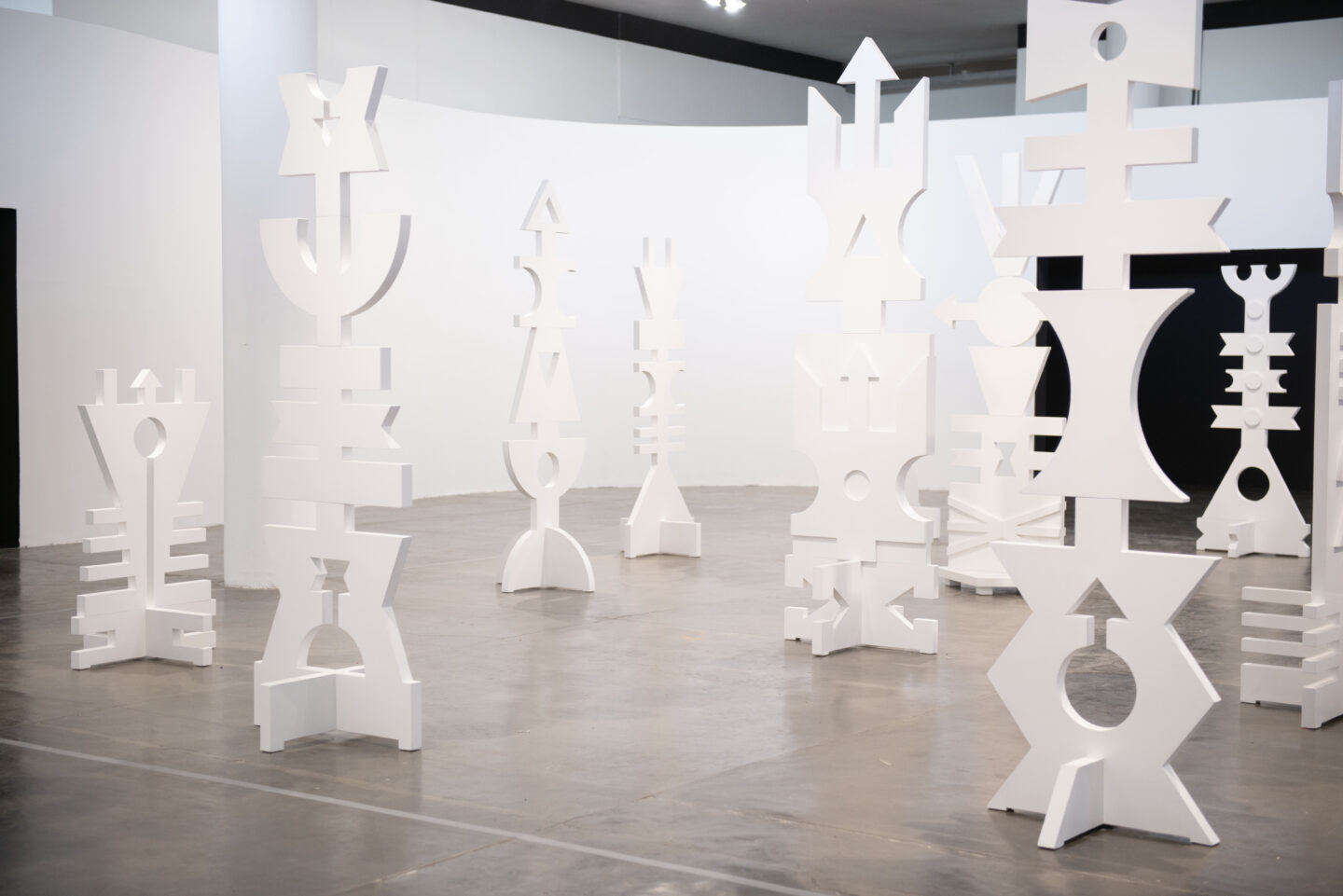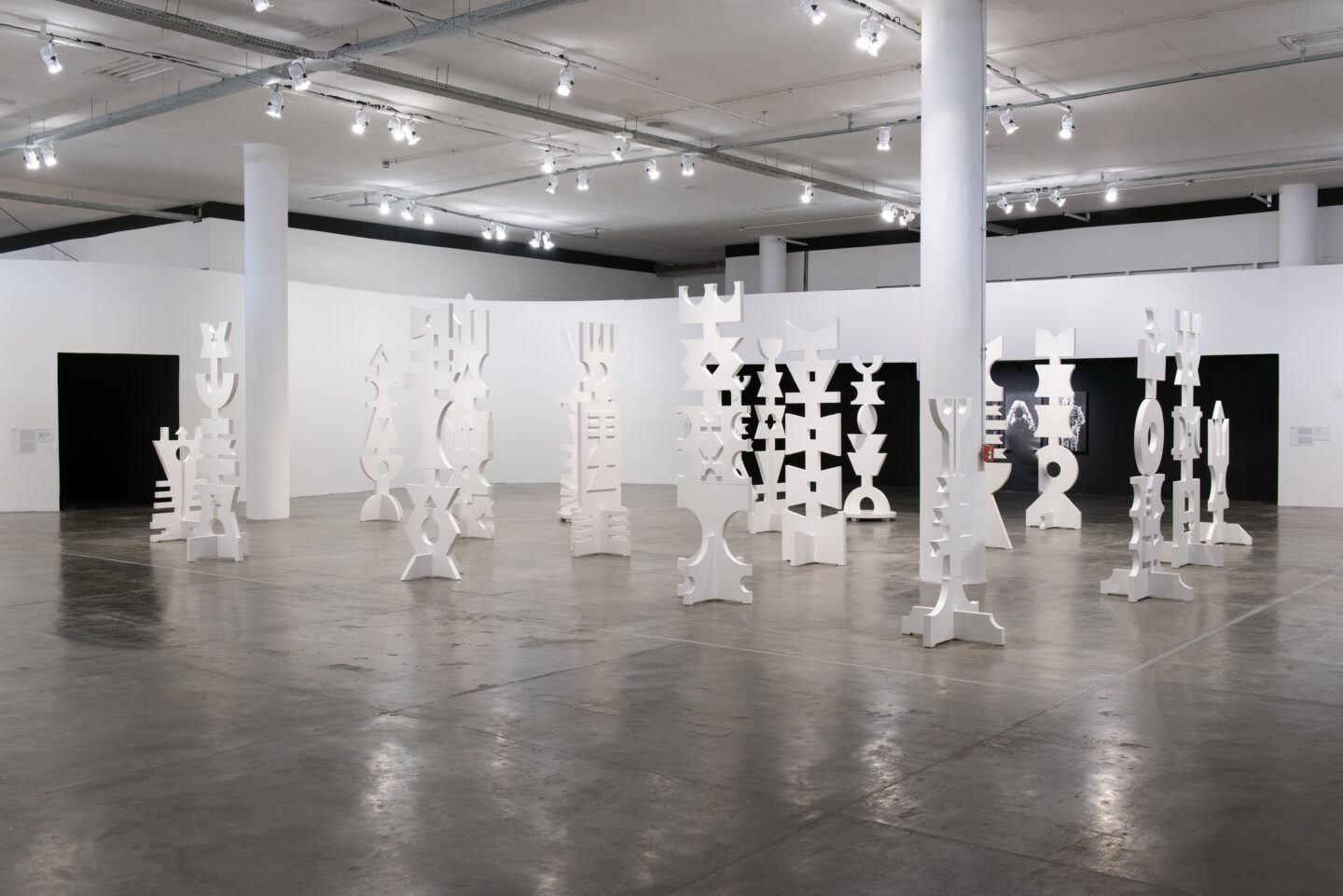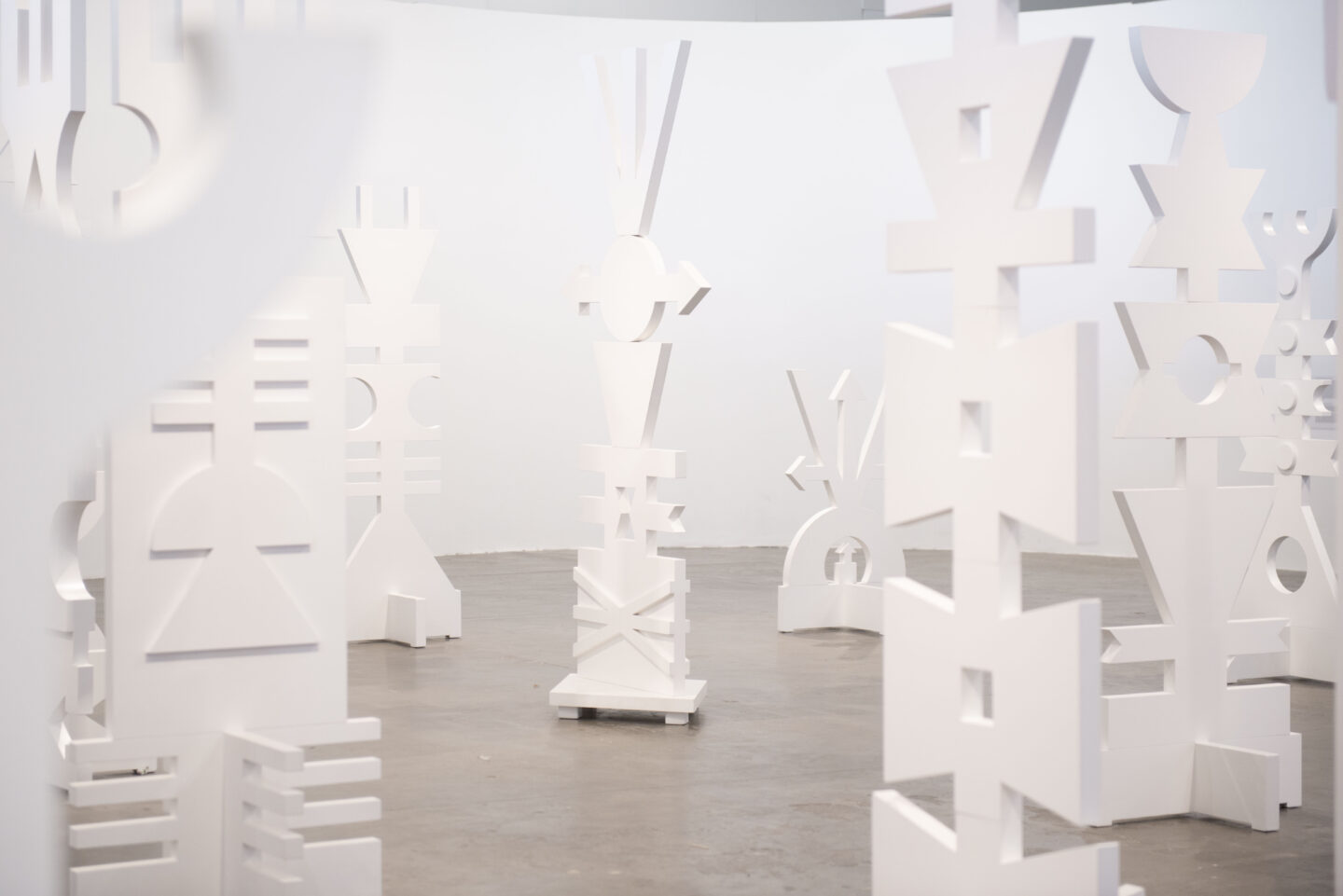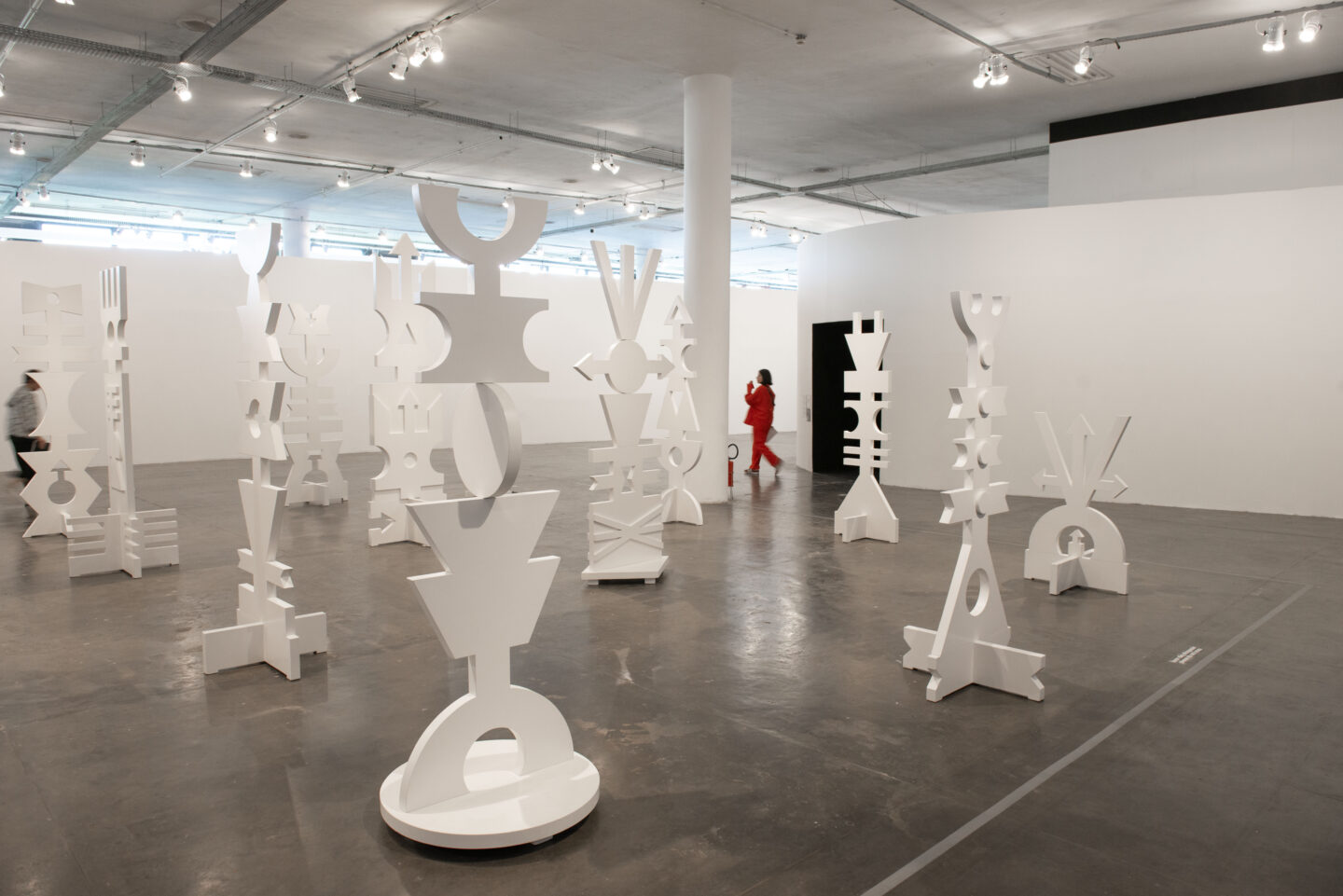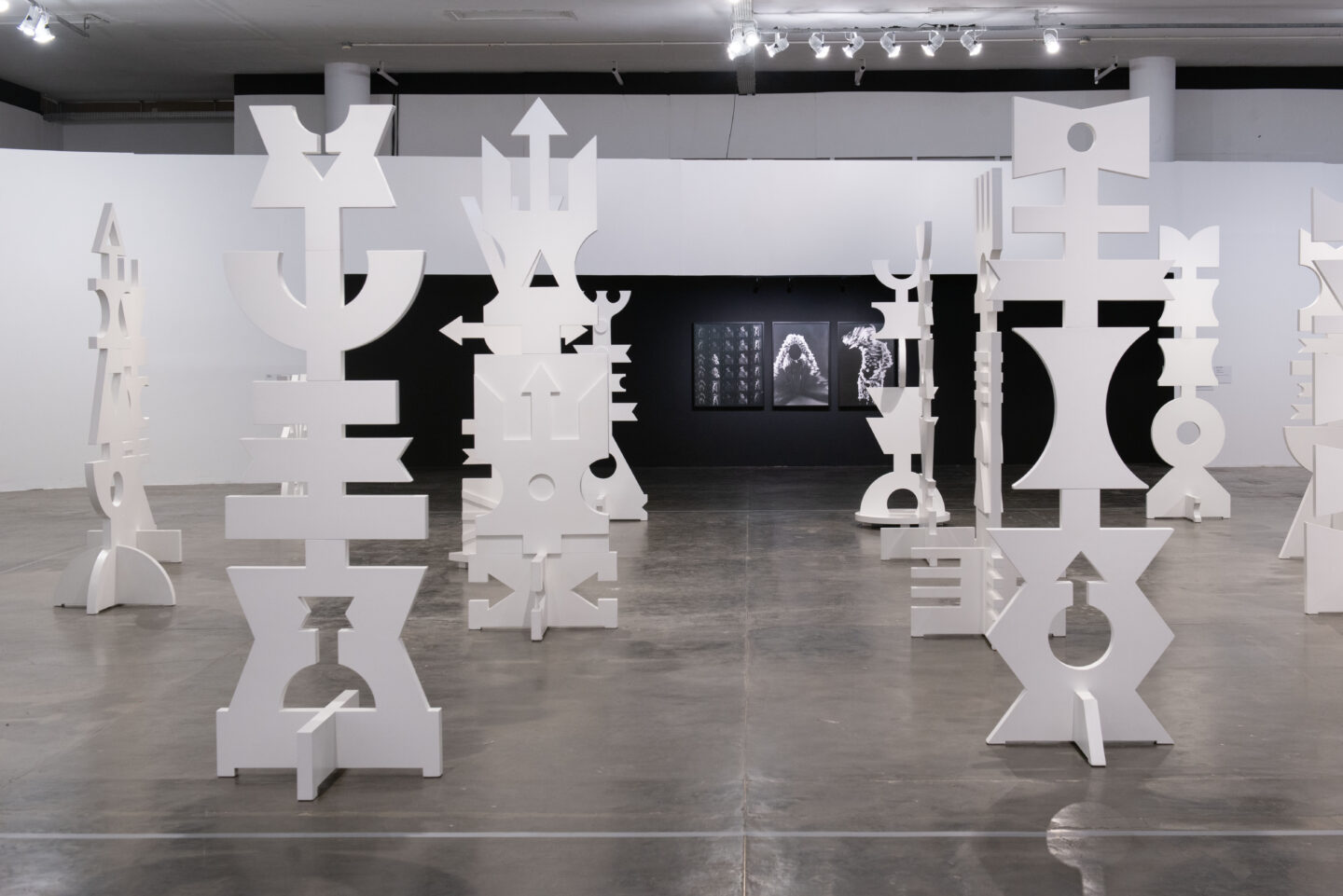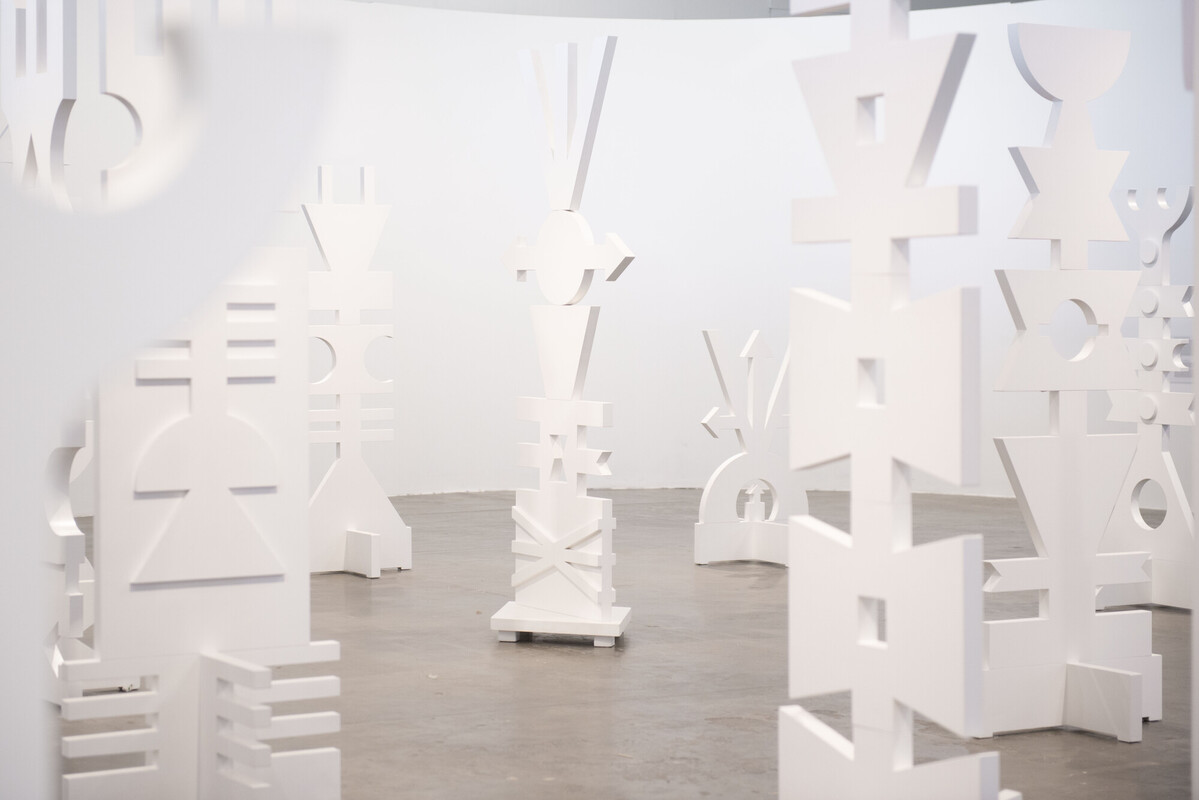
Rubem Valentim
The artist Rubem Valentim (1922–1991) combined elements of modernism and geometric abstraction with African and Afro-Brazilian cultures, and with various Eastern philosophical and mystical currents, always in search of a consciousness of the earth, of the people.
In a vigorous effort towards constituting a universal language, Valentim often incorporated symbols and motifs inspired by religious rituals, originating from the cosmogony of candomblé, paving the way for a numinous and abstract geometry that impregnated his paintings, reliefs, and sculptures.
By means of circles, triangles, trapezoids, rectangles, and colors from the orisha pantheon, the artist created a new rhythm in each work. Rigorous and inventive, the artist achieved a balance between form and color, which can be seen in the monumentality of the set of sculptures and reliefs that make up the work Templo de Oxalá [Temple of Oxalá], partially exhibited for the first time in 1977 at the 14th Bienal de São Paulo.
Notably one of the fundamental texts for art historiography, it was with the emblematic “Manifesto ainda que tardio” [Manifesto albeit late] (1976) that Valentim declared his political and conceptual purpose, and laid the foundations for his radical aesthetic contribution to Brazilian and international art tradition. Thus, the integral presence of the Templo de Oxalá at the 35th Bienal de São Paulo undoubtedly materializes the artist’s thought and legacy. The temple is the celebration and manifestation of a Brazilian visual poetics that establishes the Brazilian riscadura [trace], an identity that mobilizes geometric insignia and symbolic elements to express its connections between the physical and the metaphysical. The temple is an act that cleaves time, it is like an arrow that never delays.
horrana de kássia santoz
translated from Portuguese by philip somervell
- Vista da obra Templo de Oxalá, de Rubem Valentim durante a 35ª Bienal de São Paulo – coreografias do impossível © Levi Fanan / Fundação Bienal de São Paulo
- Vista da obra Templo de Oxalá, de Rubem Valentim durante a 35ª Bienal de São Paulo – coreografias do impossível © Levi Fanan / Fundação Bienal de São Paulo
- Vista da obra Templo de Oxalá, de Rubem Valentim durante a 35ª Bienal de São Paulo – coreografias do impossível © Levi Fanan / Fundação Bienal de São Paulo
- durante a visitação de convidados com o curador Manuel Borja-Villel da 35a Bienal de São Paulo. 04/09/2023 © Levi Fanan / Fundação Bienal de São Paulo
- Vista da obra Templo de Oxalá, de Rubem Valentim durante a 35ª Bienal de São Paulo – coreografias do impossível © Levi Fanan / Fundação Bienal de São Paulo
Rubem Valentim (Salvador, BA, Brazil, 1922 – São Paulo, Brazil, 1991) was a sculptor, painter, engraver, and teacher. The geometric compositions he created explore the variety of the national culture and give shape to Afro-Brazilian symbols and emblems. His works have been shown in major exhibitions and institutions, such as the Museu de Arte Moderna da Bahia and the 14th Bienal de São Paulo (1977). His work is part of important collections, such as the Museu de Arte Moderna da Bahia, the Museu Nacional de Belas Artes (Rio de Janeiro), the Museu de Arte de Brasília, and the Pinacoteca do Estado de São Paulo.

 Português
Português